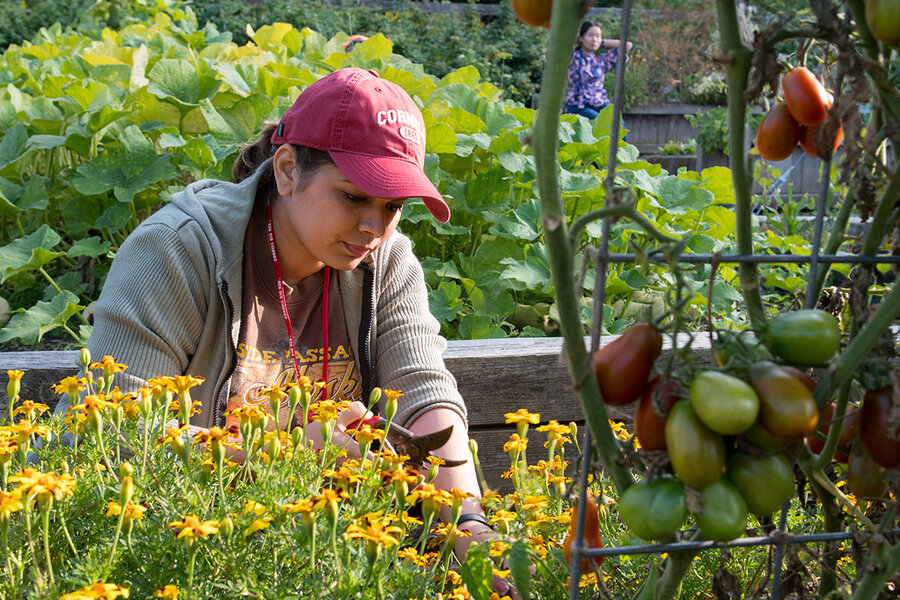Sowing common ground: Botanical gardens tell the story of climate change
Loading...
| Ithaca, N.Y.
Tucked in the back corner of the Pounder Vegetable Garden at Cornell University sits a small greenhouse. The August sun beats down on the structure, raising the temperature inside to 85 degrees F. – a jump above that day’s outside temperature of 72 degrees.
Onion stalks collapse on top of each other in one of the greenhouse’s six wooden-framed beds. Outside, a crop of the same variety grows tall and perky.
These comparative onion plantings are part of Cornell’s four-year-old Climate Change Demonstration Garden, an experiment in using plants to tell the story of climate change. This upstate New York garden is just one example of how botanical gardens are seeking to offer some common ground in dialogues around the polarizing topic of climate change.
“The topic of climate change has become so polarized, and we can’t have a conversation because you either ‘believe in it’ or you don’t,” says Sonja Skelly, horticulture professor and director of education at Cornell Botanic Gardens. “There’s something about plants and gardens that takes the polarization out of the equation,” she says.
Jennifer Schwarz Ballard, vice president of education at the Chicago Botanic Garden, agrees. “Being in botanic gardens, surrounded by nature, surrounded by living things, you can actually see their response to changing climates, as opposed to trying to have a conversation about facts and figures and tables and graphs,” she says.
In the Cornell demonstration garden, small signs dot the beds with information about how rising temperatures, mild winters, drought, or other possible climate shifts might promote taller and bushier weeds, or less abundant crops. Other signs invite visitors to record their own observations on erasable boards around the garden. And tour survey results suggest that visitors leave the garden with more concrete ideas about the local effects of a changing climate.
As a demonstration, the garden’s premise may sound simple: Turn up the heat 4 or 5 degrees to simulate temperatures anticipated for the year 2050 and the plants will respond accordingly. But putting that into practice with a simple greenhouse is not an exact science, Professor Skelly says. Temperature adjustments are not precise and the team does not alter water levels or simulate extreme weather events. The garden isn’t supposed to be a controlled experiment, says Skelly, but rather a living illustration of plants’ response to temperature changes.
“Plants are the most exquisite indicator for climate change,” says Richard Primack, a biologist at Boston University. Plants are particularly sensitive to seasonal temperature changes, he explains, as it is one of the most important factors dictating phenology, or the timing of life-cycle events. Temperature can affect when a plant leafs out, blooms, bears fruit, and loses its leaves or dies at the end of a season.
Changes in phenology are tricky to display for a one-time visitor to a botanical garden, Ms. Schwarz Ballard says, as it is something that needs to be tracked over many years. So the Chicago Botanic Garden has engaged the public in doing just that in a citizen science effort called Project BudBurst. The online project invites “anyone and everyone” to collect phenological data in backyards and schoolyards across the country.
Botanical gardens can also empower people to take action, says Schwarz Ballard. Standing in a garden “makes people realize that they are connected to something larger,” she says. “We are all part of this world and I think maybe it also helps people realize that there are things that they can do.”









